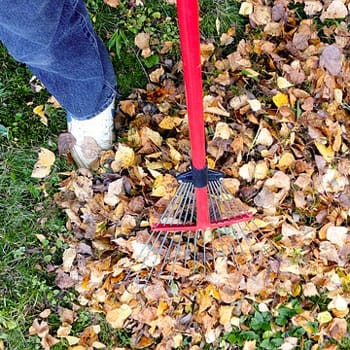Fall leaves are powerful garden allies. Most homeowners rake and bag them without a thought, but why not turn them into superb sustainable mulch or compost instead? Leaf mulch and compost are free, beautiful, and rich in organic matter. You’ll save money, and your garden will thank you.
What’s the Difference Between Leaf Compost and Leaf Mulch?
Leaf compost is made from leaves that have been decomposed; it’s usually added to soil to improve soil structure and nutrient levels.
Leaf mulch is also made from leaves but they’re not fully decomposed. Mulch is generally laid on top of the soil as a protective layer; it helps to suppress weed germination, retain moisture, insulate the soil, and reduce erosion.
Benefits of Leaf Mulch and Leaf Compost
Using leaf mulch has a lot of benefits, such as the fact that it’s:
- lightweight,
- decomposes quickly,
- doesn’t bind available nitrogen in the soil like bark mulch can, and
- it’s attractive.
Plus, the organic matter leaf mulch and leaf compost provide your soil also has long-term benefits. Once broken down it:
- improves soil organic content,
- increases the presence of important soil microbes, and
- worms love it.
How To Make Leaf Mulch
 When making leaf mulch, it’s important to get your leaves to the right consistency. Chopping them with a leaf blower/vacuum, mower or string trimmer will improve their look and allow them to break down faster. Just be sure to start with fully dry leaves, which chop more easily.
When making leaf mulch, it’s important to get your leaves to the right consistency. Chopping them with a leaf blower/vacuum, mower or string trimmer will improve their look and allow them to break down faster. Just be sure to start with fully dry leaves, which chop more easily.
Start by raking dry leaves into piles, being sure to remove any unwanted sticks.
The easiest method for chopping up leaves is to run over the piles with a mulching lawn mower (just don’t make the leaf piles too deep or the mower will get bogged down).
You can also load the dry leaves into a large trash can (a metal one is best) and chop them up with a string trimmer. Be sure to wear eye protection if you do this! And only fill the trash can half way.
If you’re using a leaf blower/vacuum, be sure to fix a catch bag to the blower.
When you’ve finished chopping the dry leaves, pile them into a designated spot in the yard. Then you have two options. Let them season for a couple of weeks before spreading the mulch throughout your garden beds, or leave the pile uncovered through winter for spring use. During winter, the leaves will break down a bit in the pile’s interior making them darker and better-suited for mulch.
How to Make Leaf Compost
Leaf compost is easy to make. Simply prepare the leaves as you would leaf mulch–chopping them hastens the composting process–then pile the leaves in a composter, wire bin or even just in a pile (although leaves are more likely to blow around in windy conditions).
The chopped leaf pile needs to be at least 4-feet high and wide to generate enough internal heat for composting. Refrain from packing the leaves tightly, good aeration helps the composting process.
To facilitate the composting process, keep your leaf pile moist, turn itevery month with a pitch fork, and sprinkle in a little nitrogen fertilizer to hasten the breakdown of the leaves. Then watch the magic happen. Even in the dead of winter, the center of the pile will heat up and composting will happen.
Well-tended composting leaf piles will take 4 to 8 months before they have fully broken down. Expect the pile to shrink. The final product should be dark, soil-like and crumbly; if it smells bad then it’s not yet ready.
So this fall, don’t remove all that “garden gold” from your yard. Use those leaves and you’ll be rewarded with fertile, rich compost and mulch made possible by your own yard!
GET THE LATEST NEWS
Subscribe to the Organic Plant Care Newsletter and get timely and helpful tips and updates monthly.
There's no spam - we promise!





